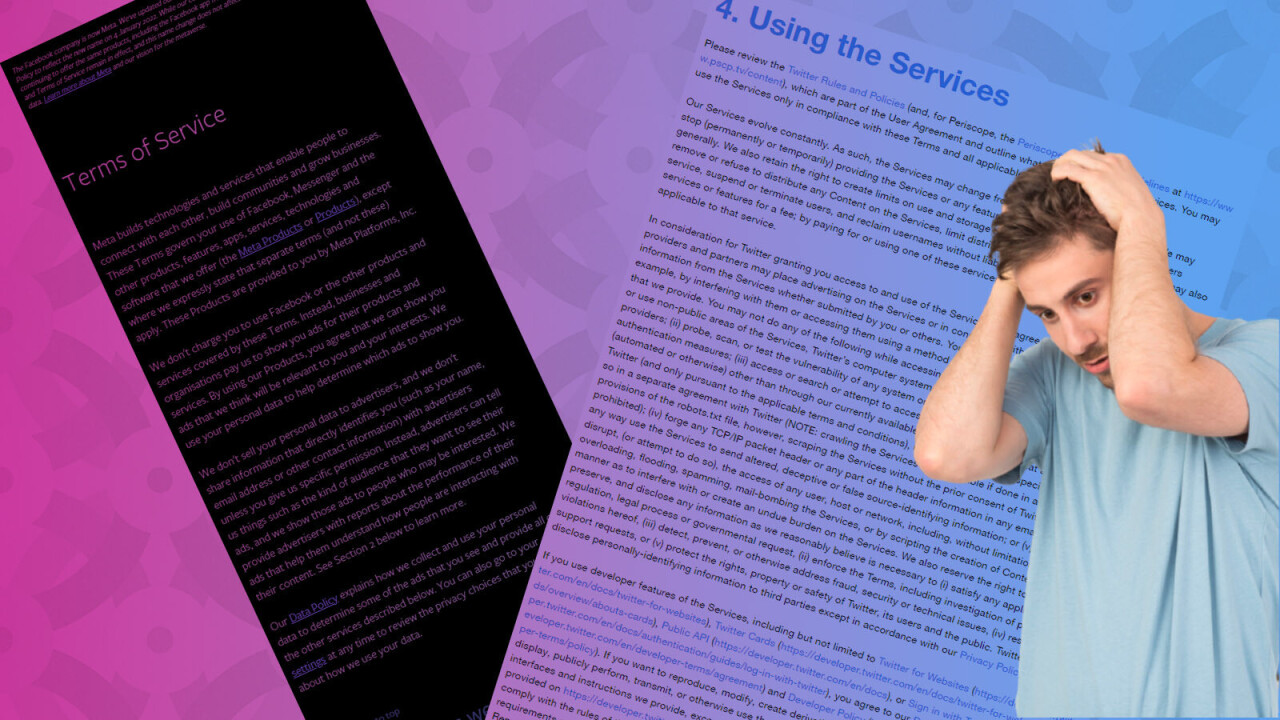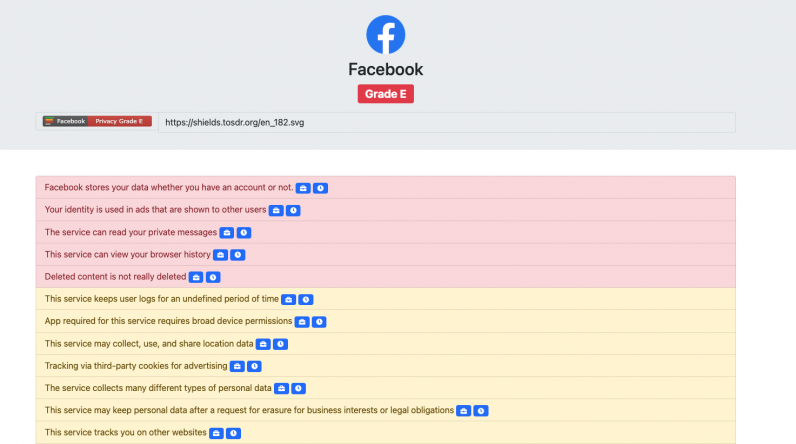
Facebook’s basic terms of service have more than 4,200 words, and Twitter’s basic terms of service have more than 3,000 words. It would take you days to go through them if you REALLY want to understand what these companies stipulate when you agree to use their products.
Pages-long terms of service agreements have been a pain in the neck for ages, but a new bill introduced in the US could be our savior. The Terms-of-service Labeling, Design and Readability (TLDR) Act, introduced by a bipartisan trio of Senators Bill Cassidy and Ben Ray Luján, and Congresswoman Lori Trahan, aims to shorten ToS documents, so they’re as easy to read as nutrition labels on packaged food.
Oh, and you’ve gotta give them props for the acronym, which is also the same one for the now-common phrase Too Long; Didn’t Read.
So how does the new bill aim to make ToS simple? Companies will have to provide the following information in a simple and skimmable format:
- What information is collected from users, and if it’s necessary for the service to operate
- A visual description of how your data is shared with third-party companies
- Instructions for deleting your data
- Legal binding for a consumer and how much right they have to their own content
- A report on data breaches of their platforms over the past three years
If companies fail to follow these standards, the Federal Trade Commission (FTC) could fine them. Plus, State Attorneys General could file a civil action lawsuit if 1,000 or more residents of the state have been affected.
What’s in it for users?
The press release of the bill quoted a 2012 study noting that it would take the average American 76 days to read service agreements of the tech services they use. No wonder all of us just agree to these terms without reading them
Another report published by The UK Children’s Commissioner in 2017, stated that none of the 12-15 year old kids surveyed at that time understood Instagram’s ToS.
The same year, researchers created a dummy website that included terms that stated users’ first-born children would be owned by the company. Many agreed to that without looking, but you can’t really blame them.
The terms of service are useful to companies in legal battles with their customers. For example, if you complain about a social network is using photos you uploaded on the platform in their ads, the firm is likely to point at the lengthy document where you signed on the dotted line, and get away with it.
Technically, the legal agreement tells us what the company is liable for and what it’s not. But practically, you can’t read pages and pages of stuff written in legal language and understand it in one go. Plus, when you just want to post about your lunch or make a video, going through all this seems like a hassle.
The TLDR bill wants to turn these giant documents into a one-pager to make us understand how your data is used, and what rights you have while using a service. It should help keep companies from snatching away your first-born.
There are already websites such as TOSDR and TLDR Legal that make it easy for us to read legal agreements of top sites on the internet. But the bill could force every tech company to follow a particular format.

What are the problems with the TLDR bill?
This sounds great on paper, but the execution might be hard. Former Microsoft executive Steven Sinofsky pointed out that most contractual language is the result of age-old wording, so that might take a lot of effort to change. Plus, in a case of a breach of the agreement (such as the alleged misuse of private data), the TLDR could count as misleading while the detailed TOS might be more explicit and worth referring to in a legal context.
PS/ Also new required disclosures also make the whole ToS *longer*. Good stuff to disclose but more words.
Finally, much of the length of ToS comes from contractual wording. Abbreviated language, colloquial lang, make the terms more difficult to litigate. Decades of precedence.
— Steven Sinofsky (@stevesi) January 14, 2022
As Gizmodo pointed out, it’s not clear if this bill tackles privacy policies and other data management-related documents. So even if the ToS are summarized, you might still have to go through a ton of documentation written in legalese.
While the new bill forms an outline for summarized ToS, if it doesn’t formalize a format, it could be difficult to parse even one-pagers for a lot of users. So we could be back to square one.
All these issues aside, the TLDR bill is a step forward towards better transparency in tech — and a better experience for end-users like you and me.
Get the TNW newsletter
Get the most important tech news in your inbox each week.




